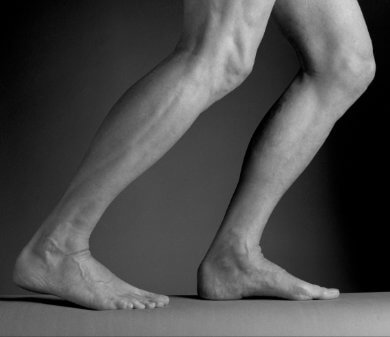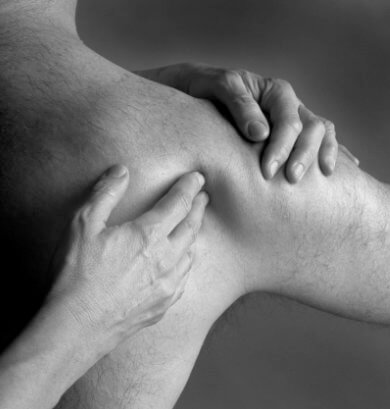Rolfing®

What Is Your Body Really Telling You?
Is it a sharp pain in the low back when you bend over for the morning paper? Or a persistent neck ache that's aggravated by long periods of sitting? If tension, compression and pain have become chronic in your life, it's an important signal—a signal that your body is struggling with a structural imbalance.
Often years in the making, such imbalances can arise from poor postural habits and accumulated stress. Or they may occur suddenly as the result of a physical injury or traumatic incident in which tissues are stretched beyond their limits. Whatever the cause, treating symptoms rarely brings lasting results. While a massage or medication may give you some temporary relief, the tension, inflammation and pain inevitably return.
That's why thousands of people have turned to Rolfing over the past 30 years. Its hands-on approach to releasing deeply ingrained patterns of tension and strain has been highly effective in treating everything from neck and back pain to impaired mobility, repetitive stress injuries and other chronic tension.

Rolfing goes well beyond conventional therapies and other forms of bodywork to balance the body in gravity for permanent relief. What's more, many people find Rolfing is an excellent way to keep their bodies flexible and adaptable—able to meet the daily stresses and changing demands of life. In fact, professional athletes, musicians and dancers have long used Rolfing to enhance their performance.
"Whatever your profession, passion or age—Rolfing offers a proven pathway to greatly enhanced physical flexibility, vitality and balance."
What Does Gravity Have to Do with It?
Our bodies react to the constant influence of gravity like every other physical structure in the universe. When we are out of balance, gravity drags us down, just as it drags down a building that has lost its structural integrity. Whether from poor posture, illness or emotional distress, an unbalanced body is in a constant tug-of-war with gravity. The result is an accumulation of tension and strain within the body's muscles and surrounding connective tissue that gives rise to pain, rigidity of movement, and depleted energy.
Rolfing's primary aim is to permanently release this tension and to overcome deeply ingrained physical restrictions—balancing and realigning your entire body in relation to gravity. While Dr. Ida P. Rolf originally called her revolutionary bodywork approach Structural Integration, Rolfing is the popular name the public first gave her work. Unlike every other form of contemporary bodywork, Rolfing is the only manipulative system whose ultimate goal is to evoke highly integrated and efficient ways of moving that enable your body to remain effortlessly balanced in gravity.

Dr. Ida P. Rolf
“One individual may experience his losing fight with gravity as a sharp pain in the back, another as the unflattering contour of his body, another as constant fatigue, and yet another as an unrelenting threatening environment. Some may call it old age; yet all these signals may be pointing to single a problem so prominent in their own structure and the structures of others that it has been ignored; they are off balance; they are at war with gravity.”
How Does Rolfing Realign the Landscape of the Body?
"A skilled Rolfer can soften and lengthen the fascia, which in turn frees your body from constrictions and enables it to right itself effortlessly in gravity."

Rolfing releases the tension, tightness and restrictions that are held in the connective tissue—called fascia—which surrounds and penetrates the muscle and every other structure in your body. If you have ever cut into a piece of steak, you have seen fascia close up: It is the white filmy substance binding muscles together.
Dr. Rolf was the first scientist to recognize the critical role played by the fascia, which gives the human body its shape and orientation. While the fascia’s remarkable plasticity enables us to adapt to stress and injury, it can also throw our bodies out of alignment with gravity. Slouched backs with heads too far forward, knock-knees or bowed legs, flat feet or high arches, excessive spinal curvature—these are all telltale signs of complex patterns of strain and tightness resulting from the thickening of the muscles and fascia.
Dr. Rolf’s deepest practical insight was to recognize that this very same plasticity could be harnessed to literally reshape the body and bring about a fundamental structural transformation. Through highly refined techniques of applying pressure with the hands, a skilled Rolfer can soften and lengthen the fascia, which in turn frees your body from constrictions and enables it to right itself effortlessly in gravity.
What Kind of Results Can You Expect from Rolfing?
For over four decades, Rolfing has brought lasting relief from chronic conditions of all kinds while promoting an enhanced sense of vitality and well-being in people of all ages and walks of life. Not only does Rolfing help you avoid the degenerative effects that arise when you are out of balance with gravity, it also enables you to let go and experience a new sensitivity toward your body and the physical world.
Rolfing clients also frequently achieve a greater psychological and emotional well-being. It has helped people in psychotherapy gain a more direct connection to their emotional life. And for many, it has deepened the practices of meditation, yoga, tai chi and other mind-body disciplines.
As years of old postural habits, injuries and the physical manifestation of emotional trauma give way to new patterns and experiences through Rolfing, your body begins to take a new form and shape. At ease with your body and balanced in gravity, you experience an enhanced sense of flexibility and freedom. And best of all, your body is better able to adapt to life’s demands and stresses in a flexible, balanced way that does not lead to physical contraction, tension and injury.

"At ease with your body and balanced in gravity, you experience an enhanced sense of flexibility and freedom."
Are the Benefits of Rolfing Long Lasting?
Yes, the release of restrictions that Rolfing brings about through the manipulation of fascia is generally long term. However, the structural imbalances, pain and rigidity that draw people to Rolfing are quite often the result of old postural habits and movement patterns that can, if left unaddressed, result in future contractions. That is why your Rolfer may recommend changing these patterns through a dynamic approach to postural awareness and movement called Rolfing Movement Integration.
Whether it is incorporated as a part of your regular Rolfing or as an adjunct therapy, the goal of Rolfing Movement Integration is to enable you to let go of the stressful postural habits that underlie your sitting, standing and walking, while rediscovering your alignment with gravity in every moment.
Since most of these habits are deeply ingrained, they are usually not subject to voluntary control. Through Rolfing Movement Integration you become more aware of the sensory inputs that trigger your movement. In this way, you can take an active role in shaping your movement patterns and freeing your body to align itself in new ways—in new, naturally balanced ways that work most effectively with gravity.
How Does Rolfing Feel?

Photograph by
Dr. Georgette Delvaux, DC
If you can imagine how it feels to live in a fluid, light and balanced body, free of pain, stiffness and chronic stress, then you can begin to appreciate the depth of the Rolfing experience. While every Rolfing session is unique, addressing your specific physical problems and patterns, Rolfing involves the manipulation of fascia at varying depths of the body. Thus, the sensation can vary from mild to strong and range from pleasurable warmth to momentary discomfort. At times there may be little sensation at all.
Early in your first session, your Rolfer and you will establish a level of physical intensity that you are comfortable with. Often, within the first sessions you will notice palpable release of tension and tightness. Many people report feeling lighter, taller and more balanced. Sometimes the effects build more gradually, with an increased fluidity of movement and greater sense of ease as well as increased alertness and energy.
Rolfing typically begins with a series of ten one-hour to one-and-a-half-hour sessions (a week or two apart) that are designed as a comprehensive approach to integrating your entire body. Special interventions to treat specific injuries can often be accomplished in fewer sessions. Post-ten sessions provide you with an ongoing way to mitigate the damaging effects of stress, enhance performance and support a wide variety of personal growth practices.
Today more than 1,200 certified Rolfing practitioners are available throughout the world. Only certified Rolfers have the advanced training and years of supervised practice it takes to safely and knowledgeably employ Rolfing techniques. I invite you to contact me to learn how Rolfing may be able to help you overcome physical limitations, let go of chronic contractions and be open to more flexible ways of moving and encountering the world.